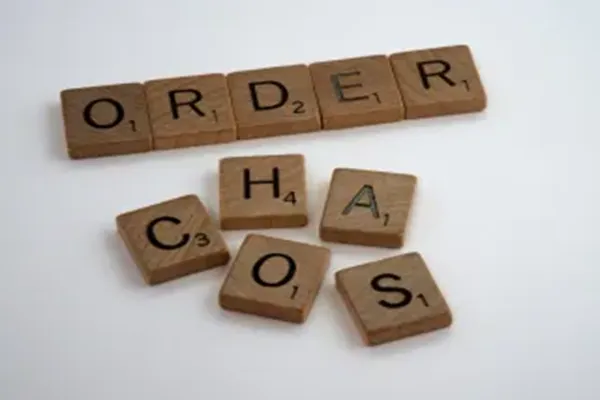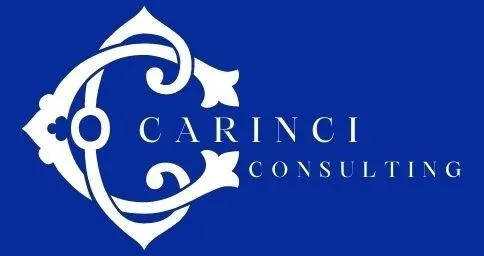
From Chaos to Clarity: How to Make Your Next Grant Proposal Practically Write Itself
"In every job that must be done, there is an element of fun.” - Mary Poppins
Does grant writing sometimes feel like staring at a 1,000-piece puzzle with no picture on the box? You’re not alone. For many nonprofits, the grant writing process can feel overwhelming, messy, and downright chaotic. But here’s the good news: with a clear plan and a few organizational hacks, you can transform the process from a stress-inducing scramble to a streamlined operation. Let’s dive into how to make your next grant proposal practically write itself.
Start with the End in Mind 🧠
Every successful grant proposal begins with a clear understanding of the goal. What’s the impact you’re hoping to achieve? Start by envisioning the project you’re proposing, including the problem it addresses, the solution you’re offering, and the outcomes you’ll deliver. Once you’re clear on the big picture, work backward to outline the pieces you’ll need to tell your story.
For example, if you’re applying for funding to expand a literacy program, identify the specific need in your community, articulate how your program meets that need, and define measurable goals like improving reading scores by a certain percentage. When you know exactly where you’re headed, writing becomes much simpler.
Build a Proposal Blueprint🏠
Think of your grant proposal like building a house. You wouldn’t start with the roof; you’d begin with a blueprint that outlines each piece. Create a template or checklist for your proposal, breaking it into key sections: Executive Summary, Problem Statement, Goals and Objectives, Methodology, Budget, and Evaluation.
Having this structure upfront not only saves time but also ensures you don’t miss critical elements. Keep this blueprint handy for future proposals—you’ll thank yourself later.
Do Your Homework on the Funder 📚
Before you even put pen to paper, take time to research the funder thoroughly. What are their priorities? What types of projects have they funded in the past? Look for grant guidelines, application requirements, and even past recipients for insights into how to position your proposal.
For instance, if a foundation emphasizes outcomes for underserved youth, tailor your language and metrics to align with their values. This step ensures you’re not just writing a good proposal—you’re writing a good proposal for them.
Create a Timeline and Stick to It 📅
Grant deadlines have a sneaky way of creeping up on you. Avoid last-minute stress by creating a detailed timeline for your proposal process. Start by marking the submission deadline and work backward, setting milestones for tasks like drafting, internal reviews, and obtaining letters of support.
For example, if the deadline is March 31, plan to have a complete draft ready by March 15 to allow time for feedback and revisions. A well-thought-out timeline prevents the late-night panic that comes with rushing to hit “submit.”
Assemble a Winning Team 👥
Grant writing does not have to be a solo sport, and having the right team in place can make all the difference. Depending on the scope of your proposal, this team might include program staff to provide project details, finance staff to craft a strong budget, and leadership to ensure the proposal aligns with organizational goals. Collaboration allows you to pool expertise, making the final product stronger and more comprehensive.
If internal resources are stretched thin or your team lacks specific expertise, consider outsourcing by partnering with a grant consultant. A skilled consultant brings deep knowledge of funder expectations, proposal strategies, and technical requirements, allowing your team to focus on core responsibilities while still producing a competitive application. Whether they’re taking the lead on writing or offering feedback to refine your work, a consultant can help elevate your proposal to the next level.
By clearly defining roles—whether internal or external—you’ll create a streamlined process that ensures every section of your proposal is crafted with care and precision. A cohesive team or strategic partnership can transform the daunting task of grant writing into a more manageable, collaborative effort.
Use Tools to Streamline the Process 🛠️
Don’t underestimate the power of technology to make your life easier. Tools like Grammarly for writing clarity, Asana or Trello for task management, and Instrumentl for grant tracking can save hours of manual effort.
Consider setting up templates in Google Docs or Word for common proposal sections like budgets and project descriptions. Reusing these templates means you’re not reinventing the wheel every time.
Edit Ruthlessly and Align with Guidelines ✍️
Once your draft is complete, it’s time to refine. Start by ensuring your proposal aligns perfectly with the funder’s guidelines—down to the word count and formatting. Then, review for clarity and conciseness. Every sentence should earn its place by adding value to your story.
A common pitfall is overloading the proposal with jargon or unnecessary details. Instead, focus on painting a clear picture of your project and its impact. If possible, have someone outside your organization review the proposal to ensure it’s easy to understand.
Celebrate and Reflect on the Process 🤔
After you’ve submitted the proposal, take a moment to celebrate—you’ve earned it! Then, schedule a debrief with your team to reflect on what went well and what could improve for next time. This reflection turns every proposal, win or lose, into a learning opportunity.
For example, if a section of the proposal took longer than expected, brainstorm ways to streamline that part of the process in the future. Continuous improvement is the key to making grant writing more efficient and effective.
Clarity Is the Key to Success
Grant writing doesn’t have to be chaotic. With a clear vision, an organized process, and the right tools, your next proposal can practically write itself. By turning chaos into clarity, you’ll not only save time but also improve your chances of securing the funding you need to make a real impact.
Ready to turn your next grant proposal into a winning one?
At Carinci Consulting, we specialize in helping nonprofits streamline their grant writing process to maximize efficiency and results. Let’s work together to make it happen.
🗓️ Schedule a complimentary strategy session.
Have questions? 📨 Email us at jennifer@carinciconsulting.com.
Office: Lexington, SC
Site: www.carinciconsulting.com

Call: 302-383-4724
Email: jennifer@carinciconsulting.com


